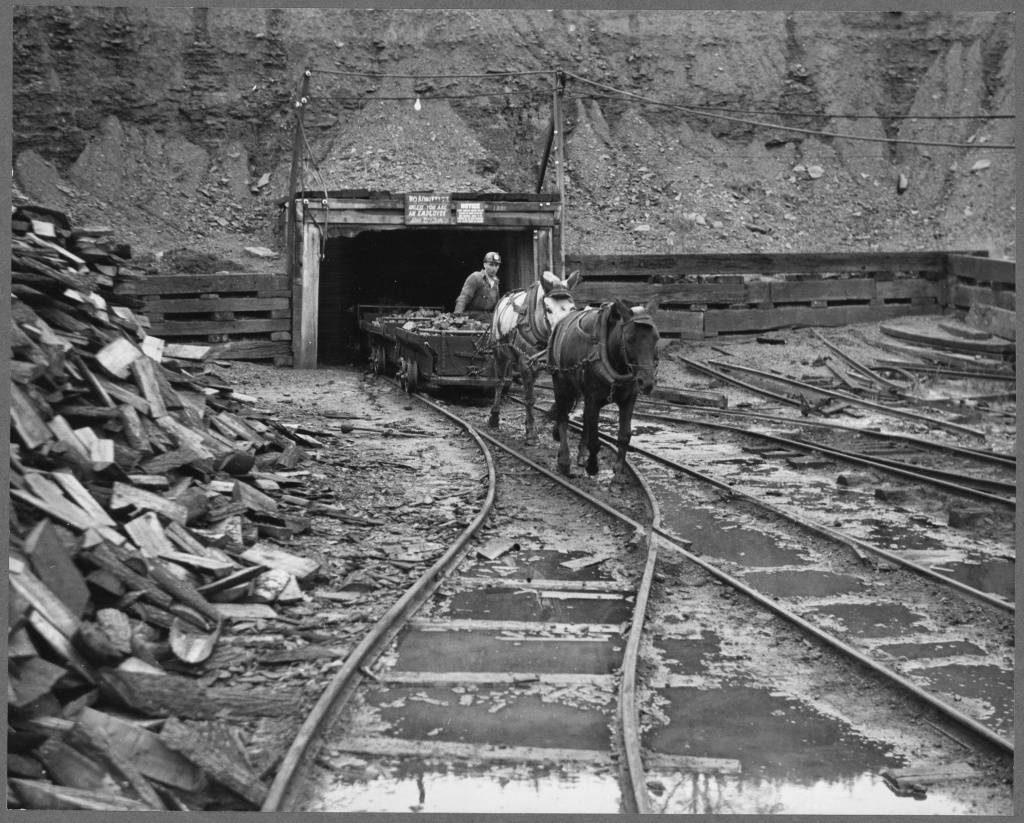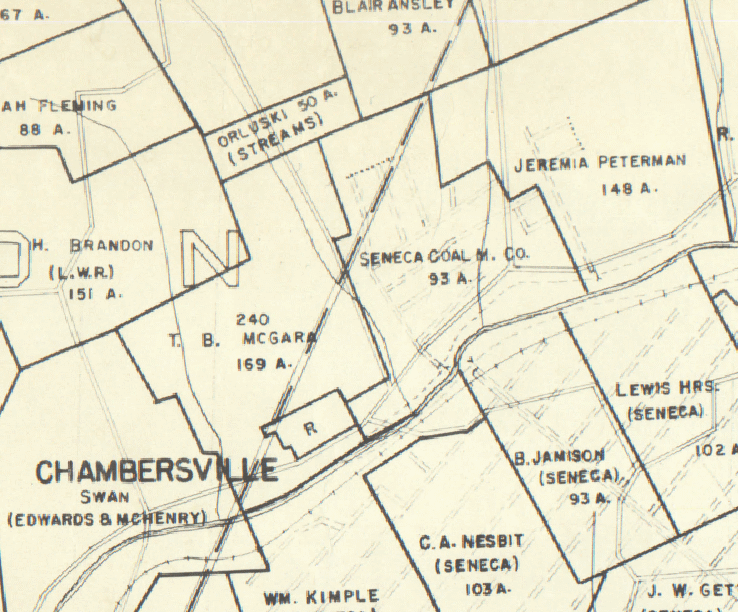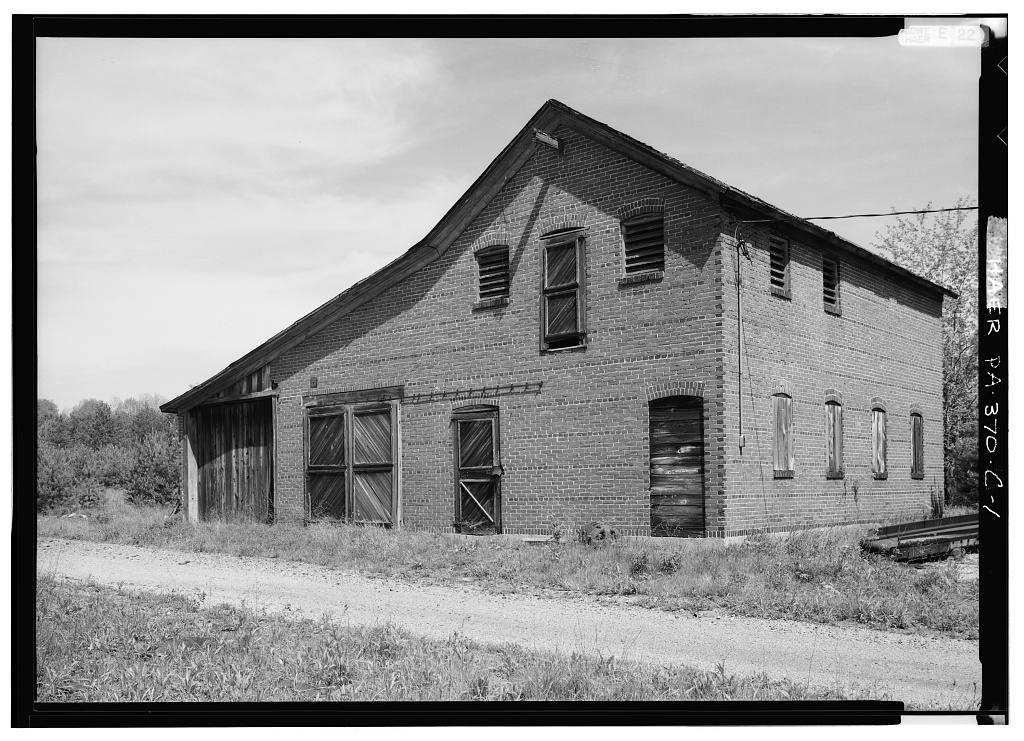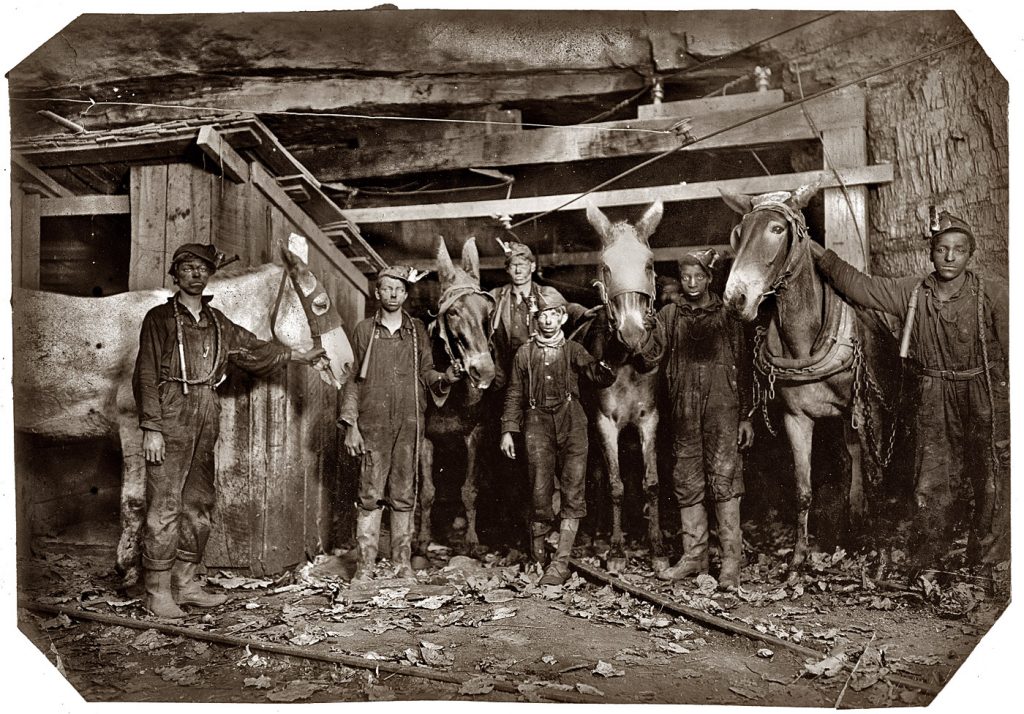This is just a sketch of a page paying homage to the humble mine mules (and horses and donkeys) who worked to build Pennsylvania!
Although the peak of mine mules was probably the 1920s, they continued to be used a surprisingly long time. It’s a bit amazing to think that even after most farms had converted to tractors and most people had electricity and a car, mules were still laboring to extract coal in Pennsylvania.
A great article on “Pit Ponies” history is
https://www.horsejournals.com/popular/history-heritage/pit-ponies-ghosts-coal-mines ![]()
Mine Mule Photos in Central Pennsylvania
The town of Creekside, a bit north of Indiana (Pennsylvania), was serious coal mining country at one time. Mules were still working there well after World War II as evidenced from this photo from national archives.

I’ve been looking at mining maps and other resources trying to figure out where the S. C. Streams “Black Diamond” coal mine was near Creekside, but I haven’t had much luck. It’s possible the location has been obliterated by strip mining.
I did find a mine parcel map that shows a parcel property belonging to Orluski with Streams as mine operator north of Creekside (near Chambersville). That parcel may have just been leased speculatively based on the adjacent Seneca Coal mine, and may have no connection to the other Streams mine.

Pennsylvania’s 1944 coal mining report listed Streams Black Diamond mine as still in operation with 46 employees, yet I can’t find historic aerials that suggest a location similar to the photo above. Unfortunately by then the reports no longer listed “number of mules or horses”.

If you happen to know where the Streams mine from the above historic photo was located, I’d like to hear from you! I’d love to get a picture of the same location, if it still exists.
Mine Mule Barns
Although in some areas (like the Anthracite regions) mine mules lived their lives stabled underground, in central and western Pennsylvania drift mines they often lived in barns.
A great example of a mine mule barn from Loyal Hanna Coal & Coke existed at Cairnbrook, Somerset county, into the early 2000s, when it was regrettably demolished.

It seems there are a few surviving mine mule barns in central Pennsylvania, such as Crabtree in Westmoreland county. In 2024 I’m hoping to get pictures of some which I will post here.
Something to Think About
This 1908 photo from the Library of Congress shows trappers and drivers: drivers drove the mules to haul loaded and empty mine cars, while trappers sat in the dark waiting to open and close doors controlling ventilation air flow (and hoped to become drivers!).
These boys and their mine mules worked underground from 7am to 5:30pm, almost certainly 6 days a week. Now tell me about your bad day.

The bare overhead wires carried 250 volts DC. If a mine mule tossed its head and contacted that wire, it got a nasty shock. If it was standing in water (likely in the mine), it probably died. Of course the boys were instructed to avoid the wire; the mules were not.
Based on the closed front, the shed at left is possibly the “outhouse”, although many mines just made you go in the piles of waste rock scattered around the mine.
So tell me again about your bad day…